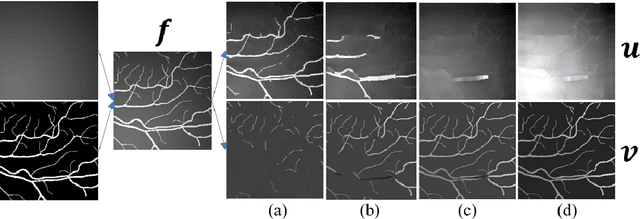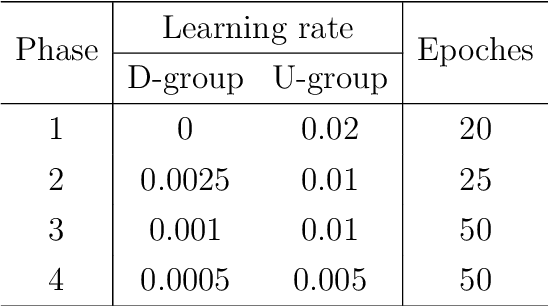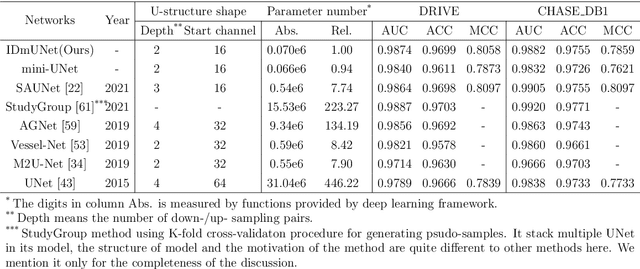IDmUNet: A new image decomposition induced network for sparse feature segmentation
Paper and Code
Mar 05, 2022



UNet and its variants are among the most popular methods for medical image segmentation. Despite their successes in task generality, most of them consider little mathematical modeling behind specific applications. In this paper, we focus on the sparse feature segmentation task and make a task-oriented network design, in which the target objects are sparsely distributed and the background is hard to be mathematically modeled. We start from an image decomposition model with sparsity regularization, and propose a deep unfolding network, namely IDNet, based on an iterative solver, scaled alternating direction method of multipliers (scaled-ADMM). The IDNet splits raw inputs into double feature layers. Then a new task-oriented segmentation network is constructed, dubbed as IDmUNet, based on the proposed IDNets and a mini-UNet. Because of the sparsity prior and deep unfolding method in the structure design, this IDmUNet combines the advantages of mathematical modeling and data-driven approaches. Firstly, our approach has mathematical interpretability and can achieve favorable performance with far fewer learnable parameters. Secondly, our IDmUNet is robust in a simple end-to-end training with explainable behaviors. In the experiments of retinal vessel segmentation (RVS), IDmUNet produces the state-of-the-art results with only 0.07m parameters, whereas SA-UNet, one of the latest variants of UNet, contains 0.54m and the original UNet 31.04m. Moreover, the training procedure of our network converges faster without overfitting phenomenon. This decomposition-based network construction strategy can be generalized to other problems with mathematically clear targets and complicated unclear backgrounds.
 Add to Chrome
Add to Chrome Add to Firefox
Add to Firefox Add to Edge
Add to Edge